Jacob Sacks
Deep Model Predictive Optimization
Oct 06, 2023Abstract:A major challenge in robotics is to design robust policies which enable complex and agile behaviors in the real world. On one end of the spectrum, we have model-free reinforcement learning (MFRL), which is incredibly flexible and general but often results in brittle policies. In contrast, model predictive control (MPC) continually re-plans at each time step to remain robust to perturbations and model inaccuracies. However, despite its real-world successes, MPC often under-performs the optimal strategy. This is due to model quality, myopic behavior from short planning horizons, and approximations due to computational constraints. And even with a perfect model and enough compute, MPC can get stuck in bad local optima, depending heavily on the quality of the optimization algorithm. To this end, we propose Deep Model Predictive Optimization (DMPO), which learns the inner-loop of an MPC optimization algorithm directly via experience, specifically tailored to the needs of the control problem. We evaluate DMPO on a real quadrotor agile trajectory tracking task, on which it improves performance over a baseline MPC algorithm for a given computational budget. It can outperform the best MPC algorithm by up to 27% with fewer samples and an end-to-end policy trained with MFRL by 19%. Moreover, because DMPO requires fewer samples, it can also achieve these benefits with 4.3X less memory. When we subject the quadrotor to turbulent wind fields with an attached drag plate, DMPO can adapt zero-shot while still outperforming all baselines. Additional results can be found at https://tinyurl.com/mr2ywmnw.
Learning to Optimize in Model Predictive Control
Dec 05, 2022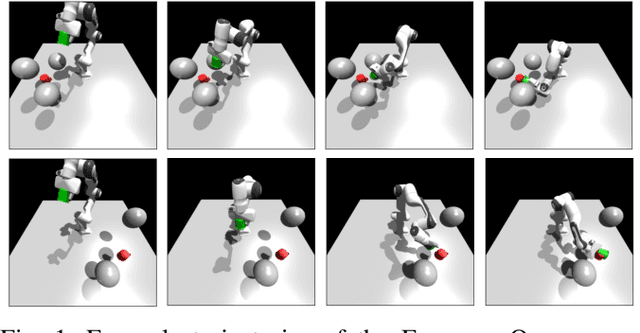
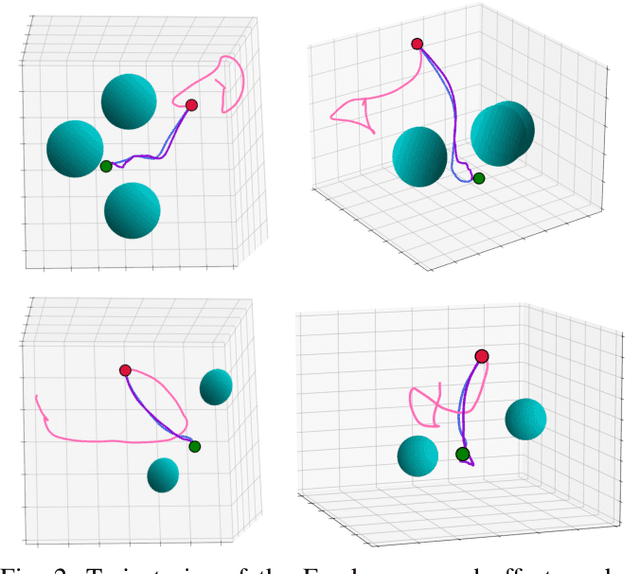
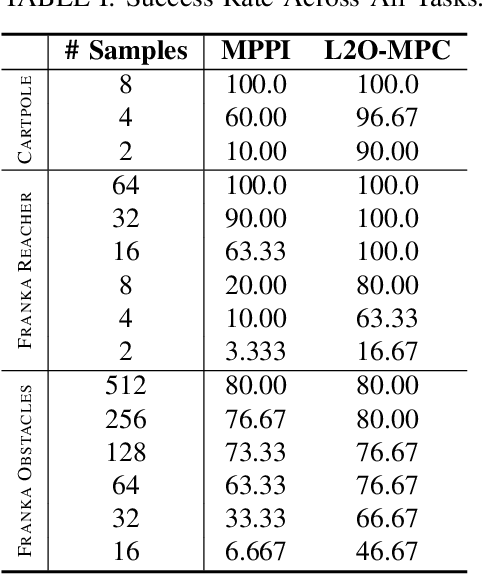
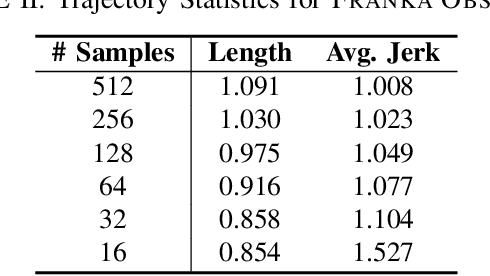
Abstract:Sampling-based Model Predictive Control (MPC) is a flexible control framework that can reason about non-smooth dynamics and cost functions. Recently, significant work has focused on the use of machine learning to improve the performance of MPC, often through learning or fine-tuning the dynamics or cost function. In contrast, we focus on learning to optimize more effectively. In other words, to improve the update rule within MPC. We show that this can be particularly useful in sampling-based MPC, where we often wish to minimize the number of samples for computational reasons. Unfortunately, the cost of computational efficiency is a reduction in performance; fewer samples results in noisier updates. We show that we can contend with this noise by learning how to update the control distribution more effectively and make better use of the few samples that we have. Our learned controllers are trained via imitation learning to mimic an expert which has access to substantially more samples. We test the efficacy of our approach on multiple simulated robotics tasks in sample-constrained regimes and demonstrate that our approach can outperform a MPC controller with the same number of samples.
* Proceedings of the IEEE Conference on Robotics and Automation (ICRA), 2022. Paper is 6 pages with 2 figures and 2 tables
Learning Sampling Distributions for Model Predictive Control
Dec 05, 2022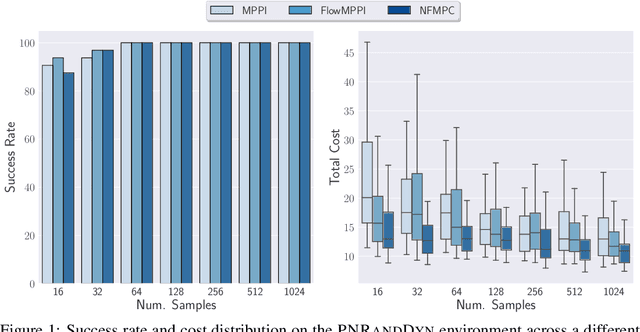
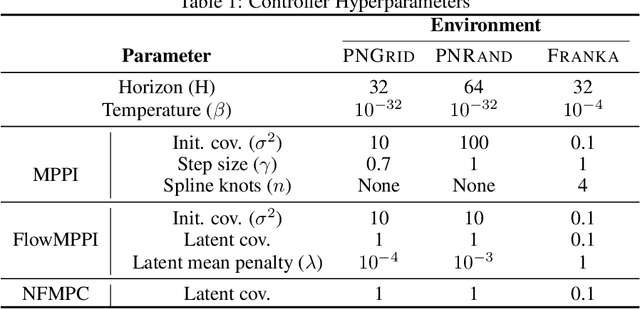
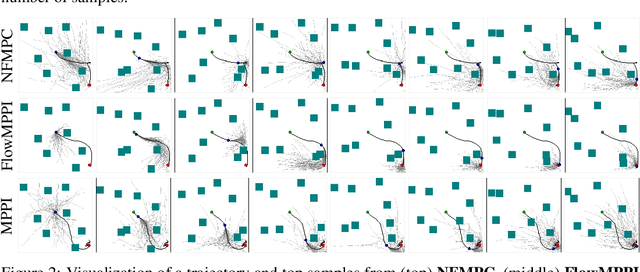
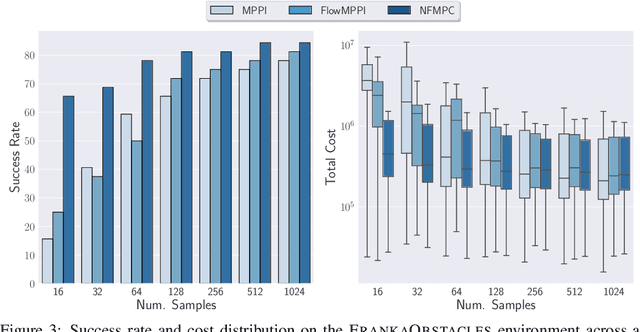
Abstract:Sampling-based methods have become a cornerstone of contemporary approaches to Model Predictive Control (MPC), as they make no restrictions on the differentiability of the dynamics or cost function and are straightforward to parallelize. However, their efficacy is highly dependent on the quality of the sampling distribution itself, which is often assumed to be simple, like a Gaussian. This restriction can result in samples which are far from optimal, leading to poor performance. Recent work has explored improving the performance of MPC by sampling in a learned latent space of controls. However, these methods ultimately perform all MPC parameter updates and warm-starting between time steps in the control space. This requires us to rely on a number of heuristics for generating samples and updating the distribution and may lead to sub-optimal performance. Instead, we propose to carry out all operations in the latent space, allowing us to take full advantage of the learned distribution. Specifically, we frame the learning problem as bi-level optimization and show how to train the controller with backpropagation-through-time. By using a normalizing flow parameterization of the distribution, we can leverage its tractable density to avoid requiring differentiability of the dynamics and cost function. Finally, we evaluate the proposed approach on simulated robotics tasks and demonstrate its ability to surpass the performance of prior methods and scale better with a reduced number of samples.
An Online Learning Approach to Model Predictive Control
Feb 24, 2019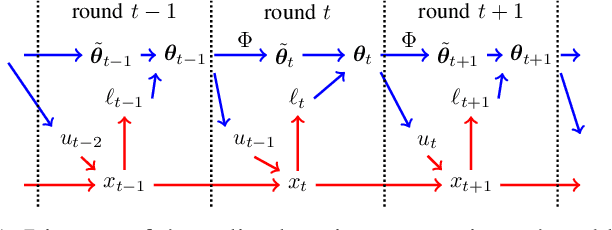
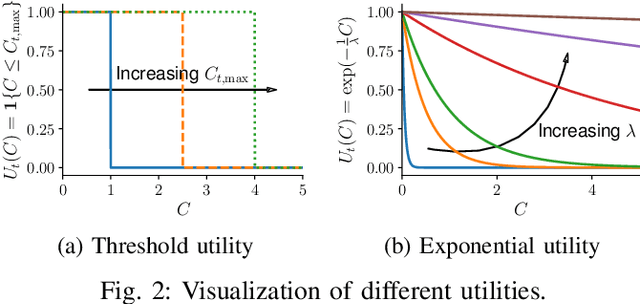
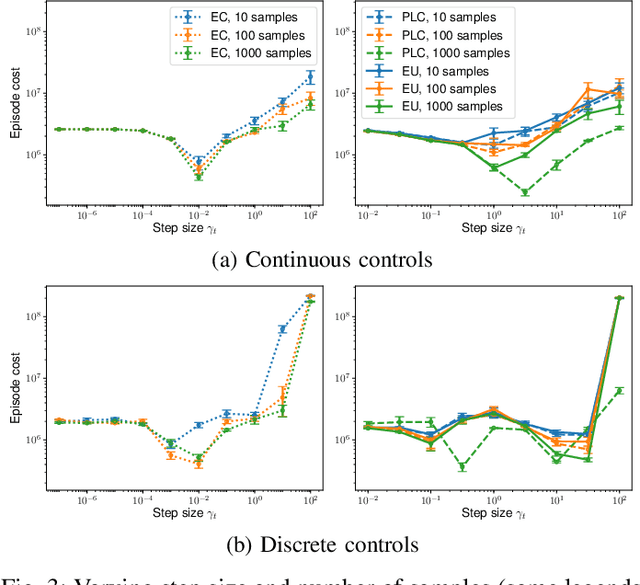
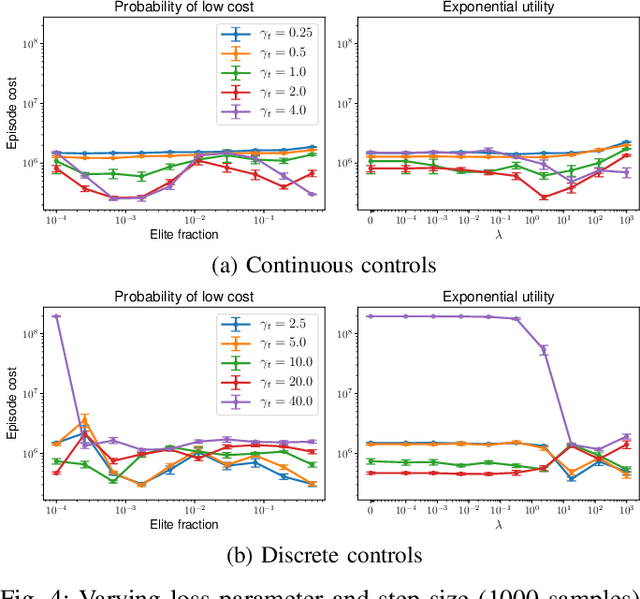
Abstract:Model predictive control (MPC) is a powerful technique for solving dynamic control tasks. In this paper, we show that there exists a close connection between MPC and online learning, an abstract theoretical framework for analyzing online decision making in the optimization literature. This new perspective provides a foundation for leveraging powerful online learning algorithms to design MPC algorithms. Specifically, we propose a new algorithm based on dynamic mirror descent (DMD), an online learning algorithm that is designed for non-stationary setups. Our algorithm, Dynamic Mirror Decent Model Predictive Control (DMD-MPC), represents a general family of MPC algorithms that includes many existing techniques as special instances. DMD-MPC also provides a fresh perspective on previous heuristics used in MPC and suggests a principled way to design new MPC algorithms. In the experimental section of this paper, we demonstrate the flexibility of DMD-MPC, presenting a set of new MPC algorithms on a simple simulated cartpole and a simulated and real-world aggressive driving task.
Differentiable MPC for End-to-end Planning and Control
Oct 31, 2018
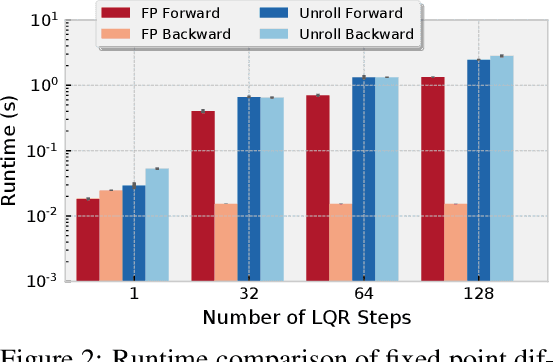
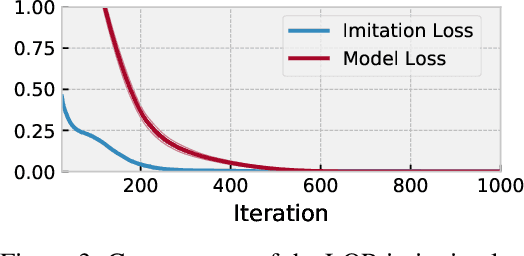
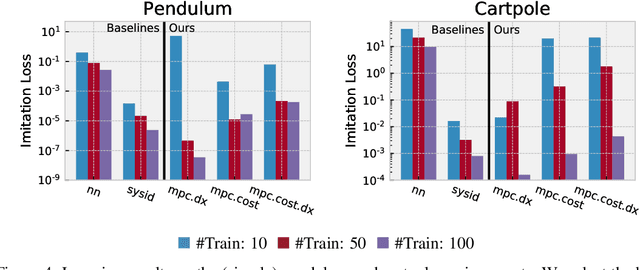
Abstract:We present foundations for using Model Predictive Control (MPC) as a differentiable policy class for reinforcement learning in continuous state and action spaces. This provides one way of leveraging and combining the advantages of model-free and model-based approaches. Specifically, we differentiate through MPC by using the KKT conditions of the convex approximation at a fixed point of the controller. Using this strategy, we are able to learn the cost and dynamics of a controller via end-to-end learning. Our experiments focus on imitation learning in the pendulum and cartpole domains, where we learn the cost and dynamics terms of an MPC policy class. We show that our MPC policies are significantly more data-efficient than a generic neural network and that our method is superior to traditional system identification in a setting where the expert is unrealizable.
In-RDBMS Hardware Acceleration of Advanced Analytics
Sep 18, 2018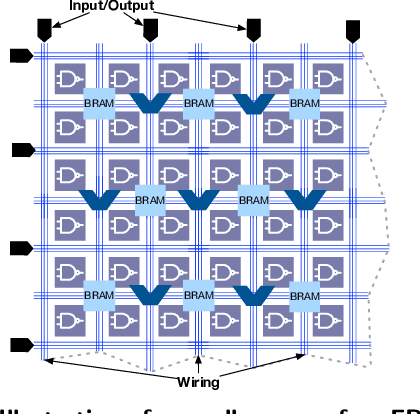
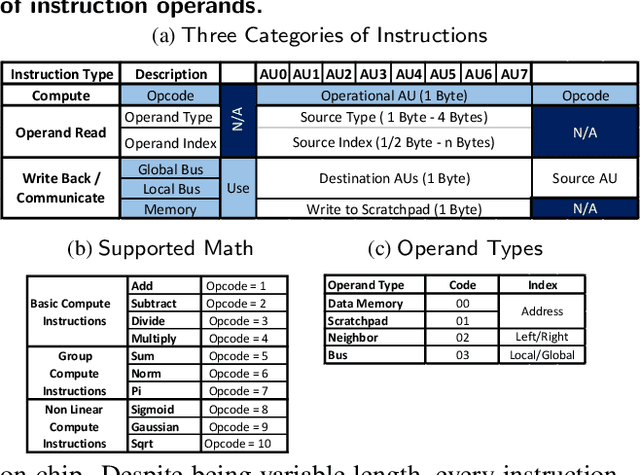
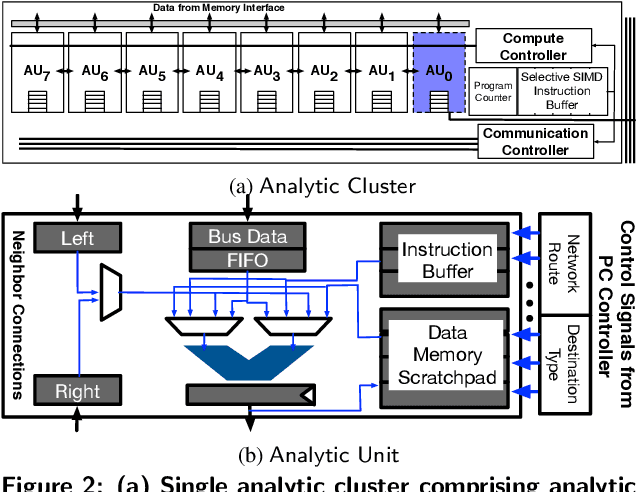
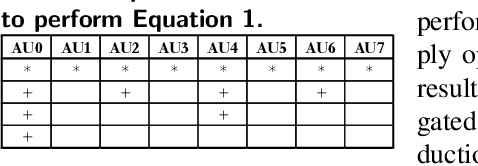
Abstract:The data revolution is fueled by advances in machine learning, databases, and hardware design. Programmable accelerators are making their way into each of these areas independently. As such, there is a void of solutions that enables hardware acceleration at the intersection of these disjoint fields. This paper sets out to be the initial step towards a unifying solution for in-Database Acceleration of Advanced Analytics (DAnA). Deploying specialized hardware, such as FPGAs, for in-database analytics currently requires hand-designing the hardware and manually routing the data. Instead, DAnA automatically maps a high-level specification of advanced analytics queries to an FPGA accelerator. The accelerator implementation is generated for a User Defined Function (UDF), expressed as a part of an SQL query using a Python-embedded Domain-Specific Language (DSL). To realize an efficient in-database integration, DAnA accelerators contain a novel hardware structure, Striders, that directly interface with the buffer pool of the database. Striders extract, cleanse, and process the training data tuples that are consumed by a multi-threaded FPGA engine that executes the analytics algorithm. We integrate DAnA with PostgreSQL to generate hardware accelerators for a range of real-world and synthetic datasets running diverse ML algorithms. Results show that DAnA-enhanced PostgreSQL provides, on average, 8.3x end-to-end speedup for real datasets, with a maximum of 28.2x. Moreover, DAnA-enhanced PostgreSQL is, on average, 4.0x faster than the multi-threaded Apache MADLib running on Greenplum. DAnA provides these benefits while hiding the complexity of hardware design from data scientists and allowing them to express the algorithm in =30-60 lines of Python.
 Add to Chrome
Add to Chrome Add to Firefox
Add to Firefox Add to Edge
Add to Edge